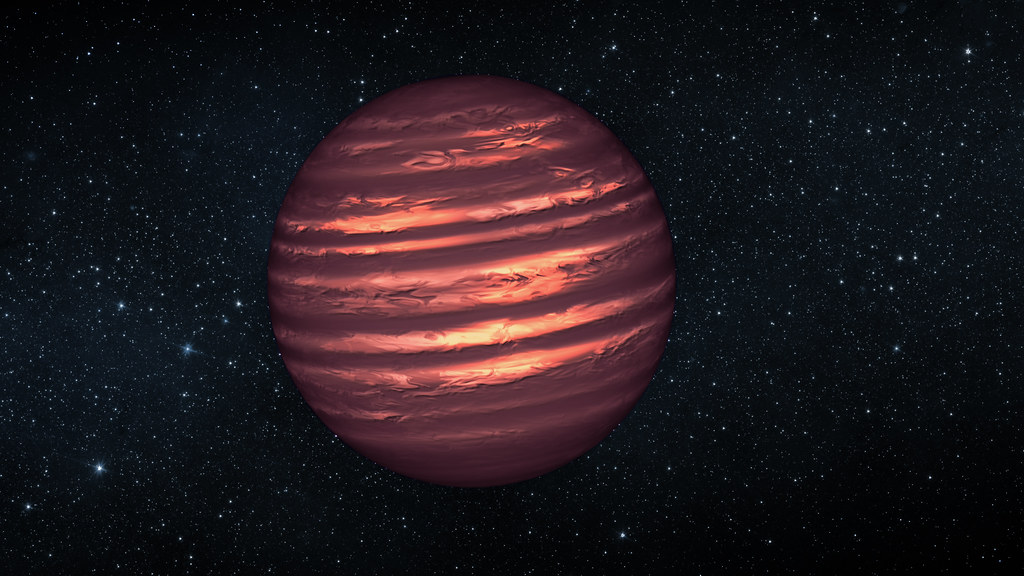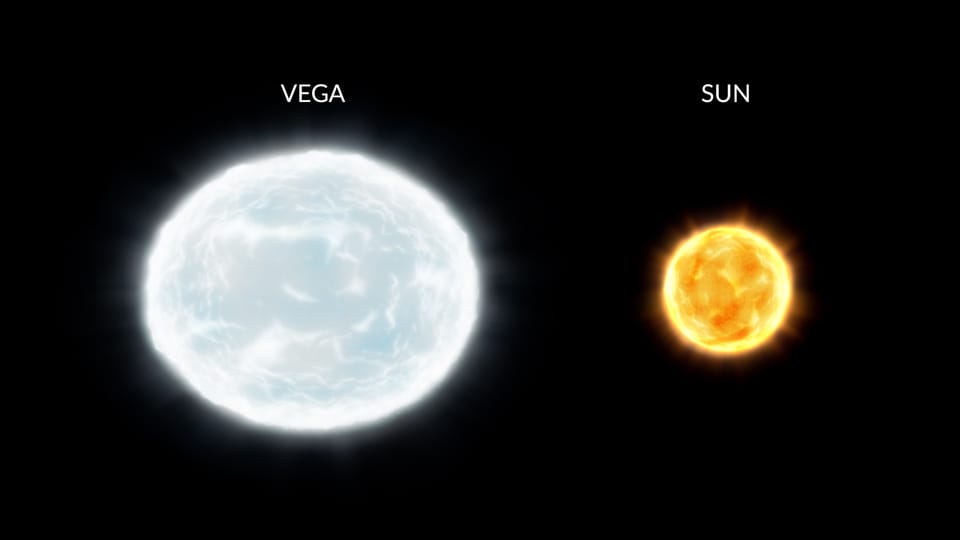
The night sky, a canvas painted with countless points of light, often leads us to ponder the very nature of stars. While we commonly perceive them as mere twinkling dots or acknowledge our own Sun as a star, their true definition transcends such simplistic views, encompassing a profound interplay of physics and cosmic evolution.
Indeed, centuries of scientific observation and theoretical physics have allowed us to articulate a more robust understanding. Fundamentally, a star is a massive, hot, and roughly spherical object, held together by its own immense gravity. It consists primarily of plasma—gas heated so intensely that electrons are stripped from its constituent atoms—and, crucially, it is luminous, emitting light as its most basic characteristic.
Yet, a truly satisfying definition demands an understanding of the core mechanism that fuels this luminosity: nuclear fusion. This groundbreaking concept, introduced in the early 20th century, revolutionized our comprehension of stellar processes. Within a star’s core, subatomic particles, such as protons and neutrons, or even entire atomic nuclei, are smashed together, fusing to form heavier nuclei and unleashing an enormous amount of energy.
For a star to maintain relative stability throughout its long lifespan, the outward force generated by this fusion in its core must be precisely balanced by the relentless inward pull of its own gravity. Our Sun, for example, is a testament to this delicate equilibrium, as it converts approximately 620 million metric tons of hydrogen into helium every second, a process that generates the energy required to power our solar system.
Thus, a star can be confidently defined as a vast, gravitationally bound mass of luminous plasma where energy derived from sustained nuclear fusion in its core is balanced by gravity. This intricate dance of forces is what truly differentiates a star from other celestial bodies, such as planets, providing the foundational insight into their existence and evolution.
Intriguingly, the Sun’s dynamic activity is far from unique in the cosmos. Observations have revealed that stars of virtually every type exhibit active characteristics and possess stellar winds that are analogous to our own solar wind. The pervasive nature and profound importance of these powerful stellar winds became evident only through significant advancements in spaceborne astronomy, specifically via ultraviolet and X-ray observations, as well as surface-based radio and infrared astronomy.
Studies conducted in the early 1980s, particularly those involving X-ray observations, yielded rather unexpected discoveries. They demonstrated that nearly all types of stars are enveloped by coronas, outer atmospheres with temperatures soaring to one million kelvins or even higher. Furthermore, these observations indicated that all stars appear to exhibit active regions—including spots, flares, and prominences—much akin to those observed on the Sun.

Some stars present starspots so colossal that an entire face of the star can appear relatively dark. Others display flare activity that is thousands of times more intense than what occurs on the Sun, underscoring the extreme variability in stellar behavior. A notable example is one of the strongest solar flares ever detected, an X-class flare captured on November 4, 2003, by the Solar and Heliospheric Observatory (SOHO) satellite, which released such intense radiation that it temporarily caused blackouts in radio communications across Earth.
The most luminous hot, blue stars possess by far the most formidable stellar winds. Observations of their ultraviolet spectra, conducted using telescopes on sounding rockets and spacecraft, have demonstrated that their wind speeds frequently attain velocities of up to 3,000 kilometers per second, which equates to roughly 2,000 miles per second. These stellar behemoths are shedding mass at rates that can be up to a billion times greater than that of the solar wind.
The corresponding mass-loss rates for these stars can approach, and sometimes even exceed, one hundred-thousandth of a solar mass per year. This astonishing rate implies that a complete solar mass, potentially a tenth of the star’s total mass, can be carried away into space within a comparatively brief period of 100,000 years. Consequently, the most luminous stars are believed to lose substantial fractions of their mass during their relatively short lifetimes, which are calculated to be only a few million years.

Ultraviolet observations have been instrumental in proving that the pressure of hot gases within a corona, which is the primary driver of the solar wind, is insufficient to produce such powerful winds in hot stars. Instead, the winds of these intensely hot stars must be directly propelled by the immense pressure exerted by the energetic ultraviolet radiation they emit. While the sheer abundance of ultraviolet radiation flowing from such hot stars is evident, the intricate details of this complex process remain incompletely understood, and theorists are actively investigating potential kinds of instabilities unique to luminous hot stars that might explain the observed variations in flow rate.
In contrast, observations conducted with radio, infrared, and optical telescopes have also established that luminous cool stars possess winds. Although their velocities are significantly lower—around 30 kilometers per second, or about 20 miles per second—their total mass-flow rates are comparable to those of the luminous hot stars. These luminous red stars are inherently cool objects, with surface temperatures hovering around 3,000 kelvins, approximately half that of the Sun.
Because of their lower temperatures, luminous cool stars emit very little detectable ultraviolet or X-ray radiation, indicating that the mechanism responsible for driving their winds must differ fundamentally from that in luminous hot stars. A distinctive characteristic of winds from luminous cool stars, unlike those emanating from their hot counterparts, is their rich composition of dust grains and molecules. Given that nearly all stars more massive than the Sun eventually evolve into such cool stars, their winds, continually flowing into space from vast numbers of these dying celestial bodies, constitute a major source of fresh gas and dust in interstellar space.
This continuous outpouring of material provides a vital link in the grand cycle of star formation and galactic evolution. As with the hot stars, the precise mechanism that drives the winds of cool stars is not yet fully comprehended. At present, investigators can only surmise that gas turbulence, magnetic fields, or a combination of both within the atmospheres of these stars are somehow responsible for these significant outflows.

Furthermore, strong winds have been observed in association with objects known as protostars. These are colossal balls of gas that have not yet matured into full-fledged stars, meaning their energy is not yet primarily derived from sustained nuclear reactions. Radio and infrared observations of deuterium and carbon monoxide molecules within the iconic Orion Nebula have revealed expanding gas clouds moving outward at velocities approaching 100 kilometers per second, or roughly 60 miles per second.
High-resolution, very-long-baseline interferometry observations have also disclosed expanding knots of natural maser emission of water vapor near the star-forming regions in Orion, thereby directly linking these powerful winds to the protostars themselves. While the specific causes of these protostellar winds remain unknown, their potential widespread presence in star formation has significant implications for astronomers’ understanding of the early solar system, considering that our Sun was presumably once a protostar.
Every star embarks on its own unique life cycle, a cosmic journey spanning from a mere few million years to trillions of years, with its fundamental properties subtly shifting as it ages. Astronomers estimate the universe to contain an astounding one septillion stars, a number represented by a one followed by 24 zeros. Our own Milky Way galaxy alone is home to more than 100 billion stars, among which our Sun stands as the most extensively studied.
Stars are born within immense concentrations of gas and dust, often called molecular clouds, which can range from 1,000 to 10 million times the mass of the Sun and stretch across hundreds of light-years. These molecular clouds are remarkably cold, a condition that encourages the gas to clump together, forming high-density pockets. These clumps can then collide with one another or accumulate additional matter, progressively strengthening their gravitational force as their mass increases.

Eventually, gravity asserts its dominance, causing some of these clumps to undergo gravitational collapse. As this collapse occurs, friction within the material generates heat, which steadily intensifies, ultimately leading to the development of a protostar—a burgeoning, ‘baby’ star. Batches of stars that have recently emerged from molecular clouds are frequently referred to as stellar clusters, and molecular clouds teeming with such clusters are known as stellar nurseries, such as the captivating NGC 3324, an edge of which was famously captured by the James Webb Space Telescope.
Initially, the majority of a protostar’s energy originates from the heat released by its initial gravitational collapse. However, after millions of years, the immense pressures and temperatures building within the star’s core become sufficient to squeeze the nuclei of hydrogen atoms together, forming helium—a process universally known as nuclear fusion. This groundbreaking process of nuclear fusion liberates vast amounts of energy, which in turn heats the star and generates an outward pressure that effectively counteracts and prevents the star from collapsing further under the relentless force of its own gravity.
Astronomers classify stars that are stably undergoing this crucial process of nuclear fusion, converting hydrogen into helium, as main-sequence stars. This period constitutes the longest and most stable phase of a star’s life. Throughout this phase, the star’s luminosity, physical size, and temperature will undergo only slow and gradual changes over millions or even billions of years. Our Sun, for instance, is currently estimated to be roughly midway through its own main sequence stage.
The amount of gas a star possesses directly dictates its fuel supply, and its total mass determines the rapidity with which it consumes this supply. Lower-mass stars burn their fuel at a much slower rate, resulting in longer, dimmer, and cooler lives compared to their very massive counterparts. More massive stars, by necessity, must burn fuel at a significantly higher rate to generate the extraordinary energy output required to prevent their own collapse under their immense gravitational weight.

Some low-mass stars are predicted to shine for trillions of years—a span of time far exceeding the current age of the universe—while, in stark contrast, some colossal massive stars may live for only a few million years. This fundamental relationship between a star’s mass and its lifespan is a cornerstone of stellar astronomy, illustrated elegantly by the Hertzsprung-Russell diagram.
This crucial diagram, a plot of a star’s temperature (which correlates to its color) against its brightness, brought clarity to what was once a confusing mess of stellar data a century ago. When a large sample of stars is plotted on this diagram, a striking pattern emerges: stars do not exhibit arbitrary combinations of color and brightness. Instead, the vast majority reside on a distinct diagonal stripe, known as the main sequence, which extends from the dim, red end of the spectrum to the bright, blue end.
Stars that are actively burning hydrogen in their cores, their primary fuel source for the majority of their existence, will invariably reside somewhere on this main sequence stripe. As stars age, they undertake a slow, gentle progression along this track, gradually becoming brighter and bluer over eons. However, once hydrogen fusion within a star’s core ceases, it departs from the main sequence and embarks upon new, diverse evolutionary paths.

The ultimate demise of a star commences when its core exhausts its supply of hydrogen to convert into helium. With the energy produced by fusion no longer balancing gravity’s relentless pull, the core begins to contract. This compression, however, leads to a dramatic increase in the core’s temperature and pressure, causing the star to slowly inflate. The precise details of a star’s final stages are heavily dependent upon its initial mass.
For a low-mass star, a fate that awaits our own Sun in several billion years, its atmosphere will continue to expand, transforming it into a subgiant or giant star as fusion begins to convert helium into carbon within its core. Some of these giant stars may even become unstable and pulsate, periodically inflating and ejecting portions of their atmospheres. Eventually, all of the star’s outer layers are gently blown away, forming an expanding cloud of dust and gas known as a planetary nebula, a beautiful cosmic spectacle like the Helix nebula.
What remains of the star after this dramatic shedding is its core, now designated a white dwarf. This Earth-sized stellar cinder gradually cools over billions of years, a slowly fading ember in the cosmic night. High-mass stars, however, follow a far more dramatic trajectory. Fusion continues to convert carbon into successively heavier elements, such as oxygen, neon, and magnesium, which subsequently become future fuel for the core. For the most massive stars, this chain of fusion continues until silicon fuses into iron.
While each new fusion process generates energy that temporarily resists the core’s collapse, each subsequent fuel source provides less and less time. By the time silicon fuses into iron, the star’s fuel supply is depleted in a mere matter of days. The crucial turning point arrives because fusing iron into any heavier element actually demands energy, rather than releasing it. At this critical juncture, the star’s iron core collapses catastrophically until the intense forces between atomic nuclei abruptly halt the collapse, causing it to rebound violently. This sudden reversal generates a powerful shock wave that propagates outward through the star.

The cataclysmic result is a colossal explosion known as a supernova, an event of unparalleled cosmic violence. The incredibly dense core of the star survives, either as a neutron star or, in cases of extreme mass, a black hole. Crucially, the material ejected into the cosmos by supernovae and other stellar events enriches future molecular clouds, providing the essential chemical elements that will be incorporated into the next generation of stars, planets, and even life itself, a testament to the universe’s grand cycle of creation and recreation.
Within the grand tapestry of stars, our understanding is further refined by classification systems that categorize these luminous bodies based on their spectral characteristics—the information embedded in the light they radiate. The general categories, designated by letters O, B, A, F, G, K, M, R, N, T, and Y, group stars and stellar objects primarily by their temperatures, luminosities, and colors.
For instance, O- and B-type stars are typically blue in appearance and rank among the hottest stars, with temperatures ranging between 30,000 to 40,000 Kelvin. Moving down the temperature scale, A-type stars exhibit a blue-white hue and possess temperatures around 9,500 K. F-type stars are distinctly white, not exceeding 7,500 K, while G-type stars, like our Sun, appear yellow-white and register temperatures between 5,900-6,000 K.

At the cooler end of the spectrum, K and M stars display orange and red colors, respectively, with temperatures ranging from 5,300 to 3,800 Kelvin. The absolute coolest stellar objects include the R, N, T, and Y stars, a group that encompasses brown dwarfs—objects that are too hot to be classified as planets but too cool to sustain the continuous hydrogen fusion characteristic of true stars. Astronomers further classify stars based on additional characteristics such as their rotation rates, metallicity (the abundance of elements heavier than hydrogen and helium), and specific information regarding their luminosity or the presence of exotic chemical elements in their atmospheres.
Revisiting the Hertzsprung-Russell Diagram, stars in their primary hydrogen-burning phase consistently align along a curving line known as the Main Sequence. Conversely, white dwarfs, giants, and supergiants fall outside this sequence, a clear indication that they are engaging in the fusion of other elements and are thus in advanced stages of their stellar evolution.
It is in the context of these classifications and life cycles that we can fully appreciate individual celestial icons. The Sun, our own star, is a G-type star that formed approximately 4.6 billion years ago. Classified as a yellow-white dwarf, it is expected to continue its hydrogen-burning phase on the Main Sequence for another 5 billion years. Following this, it will commence fusing helium, causing it to heat up and expand, potentially forming a planetary nebula before eventually shrinking into a white dwarf, cooling over an additional 10 to 15 billion years.
Beyond our solar system, the closest stars to our Sun reside in the Alpha Centauri System, located a mere 4.3 light-years away and primarily visible from the Southern Hemisphere. This system includes Alpha Centauri A, a G-type main-sequence star similar to the Sun, and its companion, Alpha Centauri B, a K-type star that is somewhat dimmer and less massive than our Sun. The third star in the system, Alpha Centauri C, more commonly known as Proxima Centauri, is uniquely the closest to Earth.

Sirius, or Alpha Canis Majoris, stands as the brightest star in our night sky and the most luminous in the constellation Canis Major. Situated 8.3 light-years from us, Sirius is the brighter member of a two-star system; its companion is Sirius B. Sirius A is an A-type main-sequence star, boasting twice the mass of the Sun and over 25 times its luminosity. Sirius B, slightly less massive than the Sun, is a dim white dwarf star. This stellar pair held significant importance for ancient civilizations, serving as a marker for seasonal changes and an aid for long sea voyages.
In terms of sheer physical dimensions, UY Scuti holds the distinction as one of the largest known stars by radius, theorized to approach the maximum theoretical limit of just under 2,000 solar radii. This red supergiant measures approximately 1,708 solar radii, equating to an astounding 2.4 billion kilometers. As a variable star, its brightness fluctuates over time, adding to its mystique.
Conversely, when considering mass, R136a1 emerges as one of the most massive stars discovered, located within a cluster in the Tarantula Nebula in the Large Magellanic Cloud. This formidable star possesses an astonishing 256 times the mass of the Sun and is part of a binary system. The ultimate fate of R136a1 remains a subject of ongoing study, with predictions ranging from a supermassive supernova explosion upon core collapse to its transformation into a neutron star or even a stellar black hole.

Vega, or Alpha Lyrae, is a familiar star to many, being the brightest in the constellation Lyra and a prominent component of the Summer Triangle asterism alongside Deneb and Altair. Notably, Vega is projected to become our pole star in the year 13,727 as Earth’s axis precesses to point towards it. Astronomers have observed that Vega appears exceptionally large relative to its mass, an effect attributed to its remarkably rapid rotation on its axis, which causes it to flatten significantly. We happen to view Vega from the direction of its pole, enhancing this appearance. At only about 400 million years old, Vega is considered quite young for a star. As an A-type star with roughly twice the mass of the Sun, it is destined for a shorter lifespan than our Sun, as it will exhaust its nuclear fuel much sooner.
Among the stars frequently discussed as potential supernovae candidates, Betelgeuse, or Alpha Orionis, is a notable red supergiant. This second-brightest star in the constellation Orion is visible to stargazers globally from November through April. Situated approximately 650 light-years away, the precise timing of its transformation into a supernova remains uncertain, though astronomers suspect it could occur within the next million years—a blink of an eye in cosmic time.
Another striking red supergiant is Antares, or Alpha Scorpii, located in the constellation Scorpius. Its name, meaning “equal to Mars” in ancient Greek, reflects its reddish appearance, strikingly similar to the planet Mars, whose orbit occasionally brings it into close proximity. Antares lies about 550 light-years from Earth and shines with approximately 10,000 times the luminosity of the Sun, possessing up to 18 times our star’s mass. It also has a smaller companion, Antares B, about four times the Sun’s radius and 10 times its mass. Like Betelgeuse, Antares is also poised to explode as a supernova, with astronomers estimating this cataclysmic event could transpire within the next 100,000 years.
Rigel, or Beta Orionis, claims the title of Orion’s brightest star and is the seventh brightest in the entire night sky. It boasts an astonishing luminosity, radiating about 120,000 times more light than the Sun, and is classified as a variable star. Rigel is accompanied by a companion star that is itself a binary system, composed of two main-sequence B-type stars.

While initial impressions might suggest simplicity, the true definition of a star unfolds into a captivating narrative of cosmic processes. From their tumultuous birth within molecular clouds to their sustained brilliance on the main sequence and their spectacular, diverse deaths, stars are much more than mere points of light. They are dynamic, temporary objects, powered by the incredible engine of nuclear fusion, each telling a story of immense energy and profound transformation.
Nature, in its vast complexity, rarely offers such straightforward insights, yet the lives of stars, driven by the predictable physics of fusion and gravity, allow astronomers a uniquely profound understanding of their past, present, and future. Despite the occasional “fuzzy borders” in the definitions of celestial categories, recognizing the distinctions between these extraordinary objects—be they planets, moons, or stars—is precisely what empowers us to continuously deepen our comprehension of the vast and wondrous universe that surrounds us.




